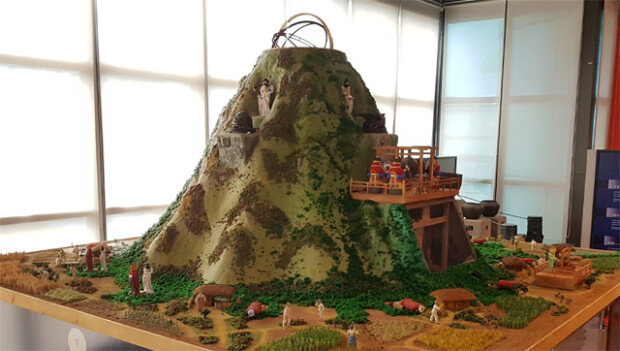Jang Yeong-sil’s water clock restored in 581 years
Jang Yeong-sil’s water clock restored in 581 years
Posted September. 10, 2019 07:39,
Updated September. 10, 2019 07:39

An automatic water clock made by Jang Yeong-sil, a scientist during the Joseon dynasty, has been restored in 581 years since it was first invented in 1438.
According to the National Science Museum on Monday, a research team led by Yun Yong-hyun, head of the Science Heritage and Preservation Division, has successfully restored the water clock called “Heumgyeonggak Okru” after three years of work with experts in archaeoastronomy and philology. The device is a combination of a water clock that indicates the time of the day and an astronomical clock that shows the change of the celestial bodies. It was first installed by Jang in 1438 during the reign of King Sejong at Heumgyeonggak, Gyeongbokgung Palace, but disappeared during the Japanese invasions of Korea in the late 16th century. The device was restored during Gwanghaegun’s reign, but disappeared from the Annals of the Joseon Dynasty during Hyojong’s reign. Historians estimate that the clock was destroyed by fire.
Heumgyeonggak Okru has a completely different intention and internal structure from those of “Jagyeokru,” another water clock made by the scientist four years earlier in 1434. The latter was more focused on providing the time of the day accurately, while the former was to let people know the importance of the time (four seasons) determined by the sky through agriculture and to stress philosophical meaning that seeks the harmony of the sky, nature, and people.
The research team, during the past three years of restoration work, found that the clock’s time signal elements were originally fivefold, not fourfold, and applied the finding to the work. The restored water clock has been displayed at the National Science Museum in Daejeon.
jawon1212@donga.com
Headline News
- ‘Korean THAAD’ L-SAM successfully developed in 10 years
- Pres. Yoon’s approval rating falls back to 10% range
- ‘Commercial Code amendments could harm capital market amid uncertainty’
- Prosecutors conduct search and seizure for industrial complex intervention allegations
- Democratic Party pushes amendment for special prosecutor







